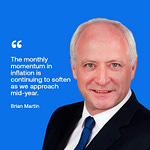US producer price inflation rises a bit, but a rate cut remains on the table. The US dollar nears a two-year high on the ‘'Trump Trade’. Australia’s jobless rate holds but employment growth slows, and there are signs of life in New Zealand’s housing market.
In our bonus Deep Dive interview, ANZ Senior Commodities Strategist Daniel Hynes looks at how Australia’s East Coast gas suppliers have dealt with entry into the global market.
5 things to know:
US producer price inflation rose to 0.2% in October from 0.1% the previous month, but was in line with expectations. The US dollar index keeps surging on the Trump trade, nearing a two-year high overnight of almost 107, says ANZ Economist Bansi Madhavani.
Australia’s unemployment rate held at 4.1% in Q3 yesterday. Employment growth slowed to 15,000 - a third of its average over the last six months. ANZ Senior Economist Adelaide Timbrell says there are slight signs of a weakening jobs market starting to show through.
The softening in employment growth and slight rise in unemployment came after data yesterday showed wages grew less than expected during Q3. Adelaide says this plays into the RBA starting rate cuts early next year.
New Zealand house prices resumed their falls in October, down 0.5% after a surprise bump up in September. ANZ Economist Henry Russell says, despite the price fall, there are signs that the market is starting to turn.
There was weakness in New Zealand’s monthly partial price data out yesterday, covering areas like food and rent prices. Henry says an index of the reported prices fell 0.1% in October. And, while a lot of the weakness was driven by tradable inflation, there were signs that domestic inflation pressures were easing.
Cheers
Bernard
PS: Catch you next week with what retail sales data in China and the US today say about the state of their respective economies.












